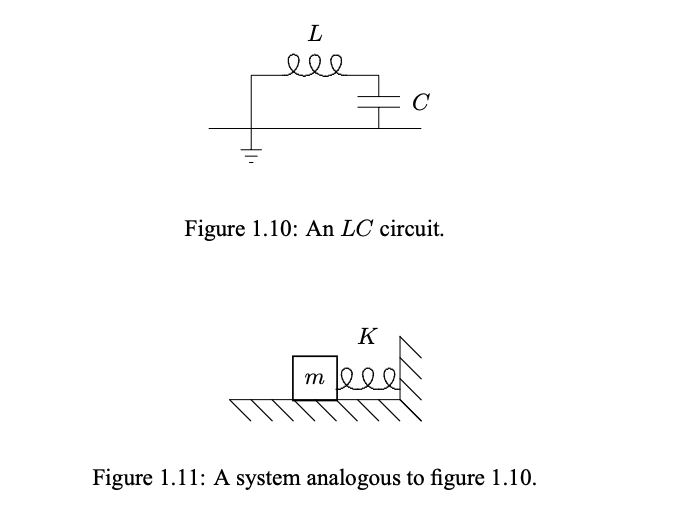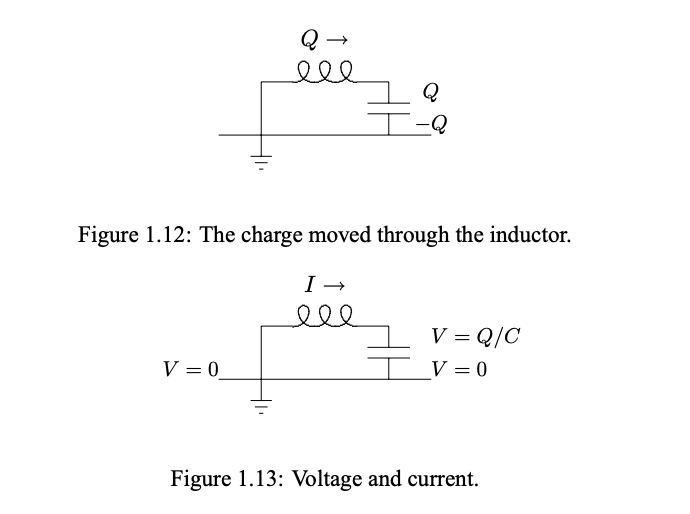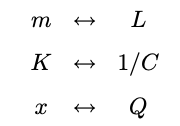1.6: LC Circuits
( \newcommand{\kernel}{\mathrm{null}\,}\)
One of the most important examples of an oscillating system is an LC circuit. You probably studied these in your course on electricity and magnetism. Like a Hooke’s law spring, this system is linear, because the relations between charge, current, voltage, and the like for ideal inductors, capacitors and resistors are linear. Here we want to make explicit the analogy between a particular LC circuit and a system of a mass on a spring. The LC circuit with a resistance less inductor with an inductance L and a capacitor of capacitance C is shown in figure 1.10. We might not ordinarily think of this as a circuit at all, because there is no battery or other source of electrical power. However, we could imagine, for example, that the capacitor was charged initially when the circuit was put together. Then current would flow when the circuit was completed. In fact, in the absence of resistance, the current would continue to oscillate forever. We shall see that this circuit is analogous to the combination of springs and a mass shown in figure 1.11. The oscillation frequency of the mechanical system is
w=√KM

We can describe the configuration of the mechanical system of figure 1.10 in terms of x, the displacement of the block to the right. We can describe the configuration of the LC circuit of figure 1.10 in terms of Q, the charge that has been “displaced” through the inductor from the equilibrium situation with the capacitor uncharged. In this case, the charge displaced through the inductor goes entirely onto the capacitor because there is nowhere else for it to go, as shown in figure 1.12. The current through the inductor is the time derivative of the charge that has gone through,
I=dQdt
To see how the LC circuit works, we can examine the voltages at various points in the system, as shown in figure 1.13. For an inductor, the voltage drop across it is the rate of
change of current through it, or
−LdIdt=V
For the capacitor, the stored charge is the voltage times the capacitance, or
V=QC
Putting (1.101), (1.102) and (1.103) together gives
LdIdt=Ld2Qdt2=−1CQ
The correspondence between the two systems is the following:

When we make the substitutions in (1.105), the equation of motion, (1.3), of the mass on a spring goes into (1.104). Thus, knowing the solution, (1.6), for the mass on a spring, we can immediately conclude that the displaced charge in this LC circuit oscillates with frequency
w=1LC


